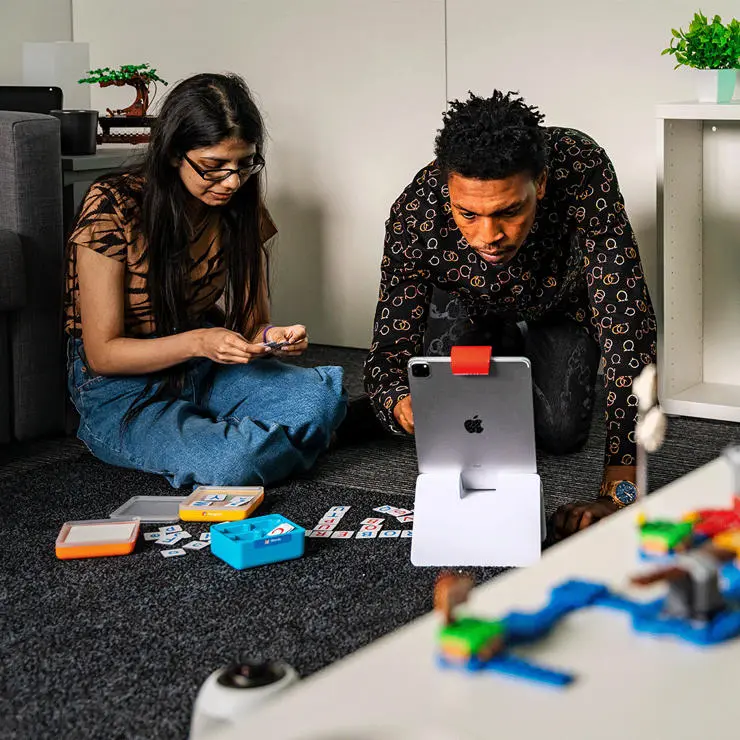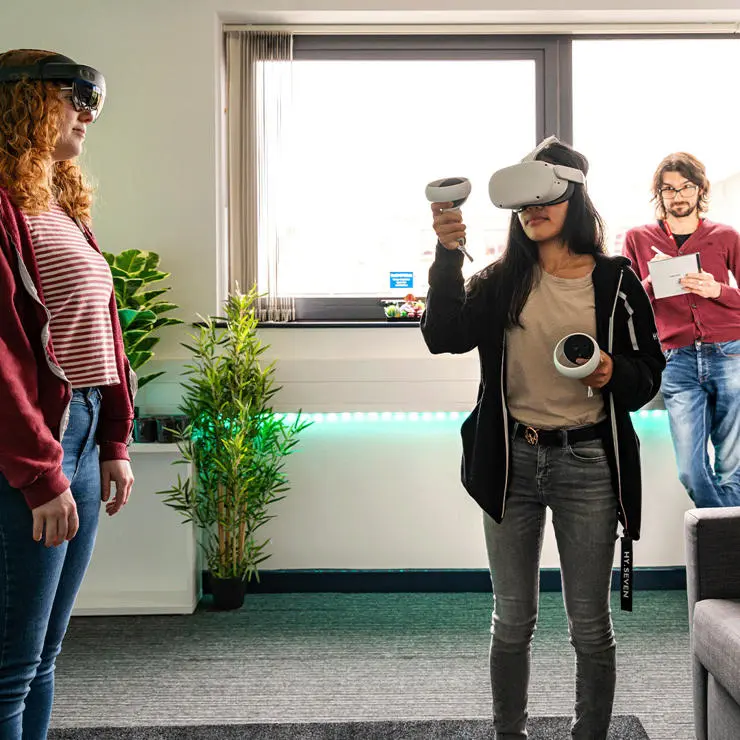It provides a platform for teaching, research and knowledge exchange in the fields of (but not limited to):
- Ubiquitous Computing
- Human-Centred Artificial Intelligence (AI)
- Robotics for Social Care
- Mixed Realities (Augmented and Virtual Reality)
- Mobile Games
- Internet of Things
- Digital Health
- Smart Homes
Develop platforms, applications and services that are functional, usable, playful, and accessible. The facility provides you with the opportunity to simulate a real-world experience. Whether that is to explore smart homes for the elderly using sensors, new digital pedagogical approaches or designing with children to better understand childhood. The Imaginarium creates a space for studies to be designed, facilitated, evaluated and iterated.
The facility has a reconfigurable space, which you can customise depending on your needs. Think IKEA, where you discover a range of experiences in their superstores exploring a defined vision of living. These pop-up living spaces influence shoppers on style, affordability and become a way of trying before you buy. The Imaginarium works in a similar way. Situated within a studio - a room for designing, making, and playing. The facility is a pop-up installation that is a flexible space for controlling, observing, and evaluating. Surrounding the pop-up room are workbenches that provide a space to design and make. The space is a combination of a maker space, usability lab, living lab and user experience lab.
An example of the types of activities conducted in the space include:
- User-Centred Design – emphasising and understanding user needs
- User Experience – testing, evaluating, and researching (cognitive, behavioural and usability; analysis and mapping)
- Co-design – co and participatory design materials including whiteboards, LEGO, and Maker Tech
- Implementing – dedicated equipment such as PC, screens, mobile devices, HoloLens




